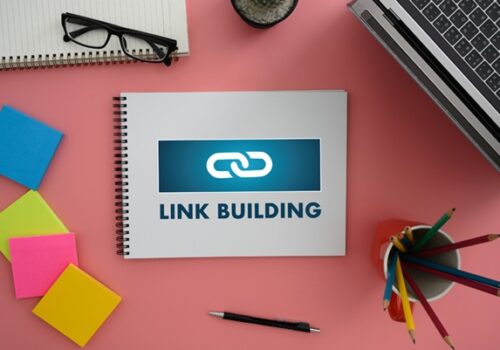The Importance of Website Speed and How to Optimize It
Introduction
In the bustling digital sphere, website speed emerges as a pivotal concern transcending mere technicalities, resonating across user experience, SEO prowess, and overall site efficacy. From the dynamic realms of eCommerce to the versatile landscapes of WordPress, optimizing load times stands as a cornerstone of online success. As a prominent website development agency nestled in the vibrant hub of Mumbai, we recognize the imperative of swift responsiveness in today’s web ecosystem. Amidst the ever-heightening expectations of visitors and potential customers, our adeptness in Website Design, Shopify SEO, Ecommerce SEO, Magento SEO, and WordPress Website SEO comes to the forefront. In this introductory dive, let’s unravel the critical nuances surrounding website speed and its profound implications on site performance and audience engagement.
Why Website Speed Matters
We live in an age where instant gratification is the norm. Users expect websites to load quickly and efficiently. If your site takes more than a few seconds to load, users are likely to abandon it in favor of a faster alternative. This affects not only your bounce rates but also your conversion rates. A slow website can frustrate users, leading them to leave before making a purchase or engaging with your content.
SEO and Website Speed
Website speed is a significant factor in SEO. Google has made it clear that faster sites rank higher in search results. This is because a fast-loading site provides a better user experience, which is a priority for search engines. Additionally, with the shift to mobile-first indexing, the speed of your mobile site is crucial. If your mobile site is slow, it can negatively impact your rankings and visibility.
Factors Affecting Website Speed
Several factors can impact your website’s speed:
- Hosting Services: The quality of your hosting provider plays a significant role in your site’s performance. Shared hosting plans can slow down your site, while dedicated or VPS hosting can offer better speed and reliability.
- Image and Video Optimization: Large, unoptimized images and videos can drastically slow down your site. Optimizing these media files is essential for speed.
- Code Efficiency: Clean, efficient code loads faster. Minifying CSS, JavaScript, and HTML files can reduce load times.
- Browser Caching: Caching stores static files on users’ browsers, reducing the need to reload them on subsequent visits.
Tools to Measure Website Speed
To optimize your site, you first need to measure its current performance. Here are some tools to help you do that:
- Google PageSpeed Insights: This tool provides insights into your site’s performance and suggestions for improvement.
- GTmetrix: Offers detailed reports on your site’s speed and provides actionable recommendations.
- Pingdom: Another excellent tool for analyzing your site’s speed and finding bottlenecks.
Optimizing Images and Videos
Large media files are often the main culprits behind slow websites. Here’s how to optimize them:
- Compression Techniques: Use tools like TinyPNG or JPEGoptim to compress images without losing quality.
- Responsive Images: Ensure images scale properly on different devices to reduce load times on mobile.
- Using Modern Formats: Formats like WebP and AVIF offer better compression and quality compared to traditional formats like JPEG and PNG.
Minimizing HTTP Requests
Each file on your site requires an HTTP request, which can slow down your site. Reduce these requests by:
- Combining Files: Merge CSS and JavaScript files where possible.
- Using CSS Sprites: Combine multiple images into a single file to reduce requests.
- Lazy Loading: Load images and videos only when they are about to be viewed by the user.
Leverage Browser Caching
Browser caching stores static files on users’ devices, reducing load times on subsequent visits. You can optimize caching by:
- Setting Expiry Dates: Configure your server to specify how long browsers should cache files.
- Server-Side Caching: Use server-side caching to store dynamic content as static HTML files, reducing server load and improving speed.
Optimizing CSS and JavaScript
Poorly optimized CSS and JavaScript can slow down your site. Improve performance by:
- Minification: Remove unnecessary characters from your code without changing its functionality.
- Asynchronous Loading: Load JavaScript files asynchronously to prevent them from blocking page rendering.
- Deferring Unused CSS: Load only the CSS needed for above-the-fold content and defer the rest.
Content Delivery Networks (CDNs)
CDNs distribute your site’s content across multiple servers worldwide, reducing load times for users by serving content from the server closest to them. Benefits of using a CDN include:
- Improved Load Times: Faster delivery of content to users globally.
- Reduced Bandwidth Costs: Offloading traffic to CDN servers reduces the load on your main server.
Reducing Server Response Time
A slow server response time can hinder your site’s performance. Improve this by:
- Choosing the Right Hosting Plan: Ensure your hosting plan matches your site’s needs, considering traffic levels and resource requirements.
- Server Location and Performance: Choose a server location close to your primary user base and ensure it has high-performance capabilities.
Enabling Compression
Compressing files reduces their size, leading to faster load times. Implement compression by:
- GZIP and Brotli Compression: Enable these compression methods on your server to reduce file sizes.
- Configuring Compression: Ensure your server is properly configured to compress files before sending them to browsers.
Database Optimization
An optimized database improves site speed. Maintain your database by:
- Cleaning Up Unused Data: Regularly remove unnecessary data, such as spam comments and post revisions.
- Indexing and Query Optimization: Use indexing to speed up database queries and optimize your queries for better performance.
Mobile Optimization
With the increasing use of mobile devices, optimizing for mobile is crucial. Improve mobile performance by:
- Accelerated Mobile Pages (AMP): Implement AMP to create fast-loading mobile pages.
- Responsive Design Best Practices: Ensure your site adapts seamlessly to different screen sizes and resolutions.
Monitoring and Continuous Improvement
Website speed optimization is an ongoing process. Maintain optimal performance by:
- Regular Speed Audits: Periodically test your site’s speed and address any issues.
- Adapting to New Technologies: Stay updated with the latest web technologies and best practices for performance optimization.
Conclusion
Website speed is crucial for providing a great user experience and achieving high search engine rankings. By understanding the factors that affect speed and implementing the optimization techniques discussed, you can ensure your website runs smoothly and efficiently. Fast-loading websites not only keep visitors happy but also improve your site’s overall performance and success.




